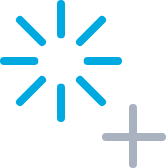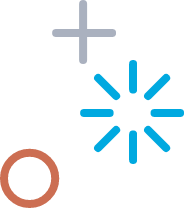Understanding ECDS Reporting: Your Questions Answered
April 10, 2025 · Becky Kolinski
More than 1,700 people joined NCQA’s recent webinar, ECDS Explained: Key Insights and Common Questions, to learn the how’s and why’s of Electronic Clinical Data Systems (ECDS) reporting, what’s coming next and how organizations can prepare.
Key Takeaways
- The industry is moving toward measuring outcomes and whole-person care. To do that, it needs quality measures that include clinical data.
- The ECDS reporting method encourages the use of electronic clinical data, in addition to other sources such as claims data.
- Although ECDS reporting has been part of HEDIS® since 2015, it’s not well understood.
- ECDS reporting uses many of the same types of data as the Administrative and Hybrid reporting methods—just in a different format.
- NCQA plans to transition HEDIS measures from the Hybrid method to ECDS by MY 2029.
- To prepare, health plans should improve data standardization and partner with care delivery organizations and HIEs to increase their access to electronic clinical data.
What Is ECDS?
The ECDS reporting method encourages the use and exchange of electronic data, and sets standards for the types of structured data that can be used in a measure. NCQA created ECDS reporting to enable quality measurement of patient outcomes for depression, which requires clinical information not often found in claims. We expanded ECDS reporting for other measures, such as unhealthy alcohol use screening, prenatal and postpartum care, immunizations and social needs screening.
Goals of ECDS reporting:
- Increase available data for quality measurement. All relevant data sources can be used for any aspect of a measure—including numerator and denominator—so if a diagnosis code isn’t on a claim, but is in EHR data, it can be used to define a measure’s eligible population.
- Enable interoperability. Data must be stored in structured electronic formats that use standard layouts and clinical terms such as LOINC® and SNOMED CT.
- Support bidirectional data exchange. Health plans must be able to share data they receive with clinicians and patients.
What Data Can Be Used for ECDS Reporting?
ECDS reporting uses multiple data sources: administrative claims, EHRs, HIEs, clinical registries, immunization information systems and case management systems. In ECDS reporting, data must be collected for an entire eligible population, whereas Hybrid reporting uses a sample of the population and extrapolates the results.
Although data sources used in ECDS reporting are similar to those used in the Administrative and Hybrid reporting methods, data are structured differently. For example, immunization information systems data are considered “supplemental” for the Administrative and Hybrid methods, but are classified as “HIE/clinical registry” for ECDS reporting. Guidelines for categorizing data are published annually in the HEDIS Volume 2 specifications.
What’s the Difference Between ECDS, dQMs and eCQMs?
- ECDS is a reporting method for health plans that collect and submit HEDIS measures. It defines measure specifications and types of data that can be used, but does not require a specific data format. Different HEDIS software vendors may code measures in different programming languages.
- Digital quality measures (dQM) provide a digital format for HEDIS measures. These self-contained file packages include the technical specifications in human-readable documentation and computable interoperable specifications—the HL7® FHIR® standard and CQL. One way to access dQMs is through NCQA’s Digital Content Services.
- Electronic clinical quality measures (eCQM), originally developed for the CMS EHR Incentive Program (“Meaningful Use”), are designed for eligible providers or hospitals, and primarily use EHR data to calculate measure results. Refer to the eCQI Resource Center for additional information about eCQMs.
What’s the Timeline for Transitioning From Hybrid Reporting to ECDS Reporting?
For MY 2025, 19 HEDIS measures can be reported using ECDS. NCQA plans to transition all measures that use the Hybrid reporting method to ECDS reporting by MY 2029, and plans to eventually transition the remaining traditional HEDIS measures to ECDS-only reporting.
Health plans currently have the option to report some traditional HEDIS measures using ECDS. This provides an opportunity for them to gain experience with ECDS reporting, using measures they are familiar with.
How Can Organizations Prepare for ECDS Reporting?
Health plans should focus on two goals.
- Improve data standardization. ECDS reporting encourages the use of clinical data in a structured format, using standardized code sets. Not all organizations have that level of structure in their EHRs and other data sources, but there are ways to map the data. Plans should review HEDIS Volume 2: Technical Specifications and consult with their HEDIS auditor for guidance.
- Increase the exchange of electronic data. Create a plan to exchange clinical data in a standard format (the HL7 FHIR standard), either through an HIE or through direct transmission from care delivery organizations. Incorporate clinical data-sharing requirements into value-based payment arrangements as an incentive for care delivery organizations and clinicians to participate.
Health plans can start using the ECDS reporting method with data they already have—this will help them identify gaps and encourage them to obtain more clinical data to improve rates.
Learn More
For more information about ECDS reporting:
- Visit the ECDS webpage.
- Review ECDS frequently asked questions.
- Read the issue brief on leveraging clinical data for HEDIS.
- View the webinar and access the presentation slides here.
HEDIS® is a registered trademark of the National Committee for Quality Assurance (NCQA).
HL7® and FHIR® are the registered trademarks of Health Level Seven International; their use does not constitute endorsement by HL7.
LOINC® is a registered United States trademark of Regenstrief Institute, Inc.








